Fruits are a staple in most diets around the world and come in all shapes, sizes, and colors. While some fruits are readily available and relatively inexpensive, others are much rarer and come with a hefty price tag.
In this article, I will be looking at some of the most expensive fruits in the world and try to make you understand what makes them so special.
From the exotic durian fruit to the luxury fruit, Yubari King Melon, I will also take you through their history, taste, and why they are so expensive. Moreover, I will take a closer look at the places where these fruits are grown and the unique conditions that make them so coveted.
List of Expensive Fruits
- Yubari King melon
- Densuke watermelon
- Sekai-Ichi apple
- Rambutan
- Ruby Roman Grapes
- Square or Cubed Watermelon
- Miyazaki Mango or Purple colored
- White Jewel Strawberry
- Sembikiya Queen Strawberries
- Dekopon Citrus
- Dragon Fruit
- Budha Shaped Pear
- Heligan Pineapples
Description of the fruits
Yubari King melons
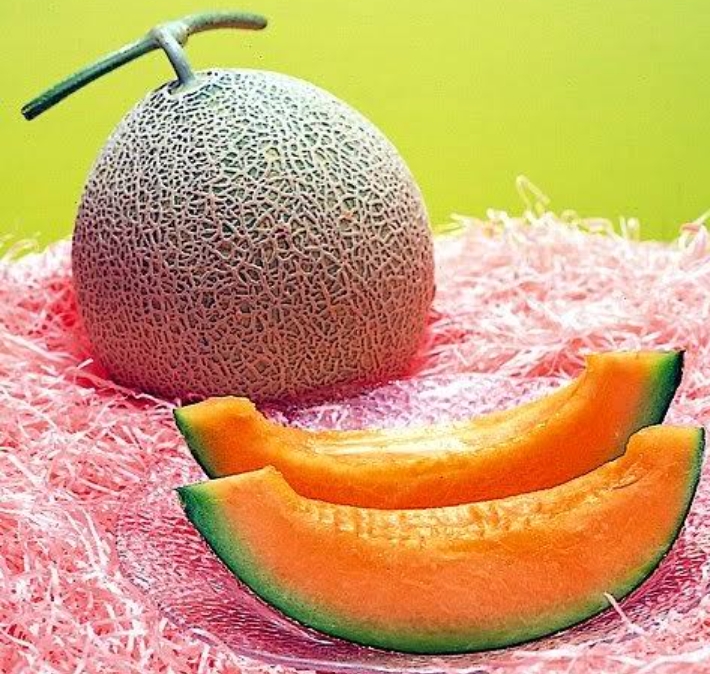
Yubari King melons are considered the most expensive fruit in the world due to their high demand and limited supply. They are grown in the town of Yubari, located in the island of Hokkaido, Japan.
The Yubari King melon is a hybrid of two other types of melons, the Earl’s Favorite and Burpee’s Spicy Cantaloupe.
The history of Yubari King melons can be traced back to the 1950s, when a farmer in Yubari named Saburo Kojima crossbred the Earl’s Favourite and Hart’s Temptation melons to create a new variety. He named it the Yubari King melon, and it quickly gained popularity for its sweet taste and high sugar content.
The Yubari King melon is generally a rounded melon and can weighs around 1 to 1.5 pounds. The skin is bright orange in color, smooth and glossy.
The flesh of the melon is also a bright orange color and is known for its sweet taste and high sugar content. It takes about 100 days for a delicious Yūbari melon to reach full growth.
The Yubari King melon is a highly sought-after fruit and is considered a luxury item in Japan. Due to the unique growing conditions in Yubari, such as the volcanic soil and ideal climate, only a limited number of Yubari King melons can be produced each year, making them quite rare.
The Yubari king is wonderfully delicious with a rich flavor. In 2018, a pair of Yūbari Kings was auctioned for ¥3.2 million ($29,000) in Sapporo, making it the world’s most expensive melon.
Also Read: Most Expensive Flowers In The World Today
Densuke watermelon

Densuke watermelon is a variety of black watermelon that is grown in Japan. It is considered to be one of the most expensive fruits in the world, with prices reaching as high as $6,100 per melon.
The reason for its high price is its rarity, as it is only grown in the town of Toma in Hokkaido, Japan, and only a limited number of melons are produced each year.
The history of Densuke watermelon can be traced back to the late 1800s, when it was first discovered in the town of Toma. The melons were originally grown for local consumption, but over time they gained a reputation for their unique sweetness and crisp texture.
In the 1980s, the Densuke watermelon was first sold at auction and it quickly became a highly sought-after luxury item. Today, Densuke watermelon is considered a delicacy and is often given as a gift to dignitaries and celebrities.
Densuke watermelons are known for their large size, typically weighing between 10-20 pounds. The rind of the Densuke watermelon is black, which is unique among watermelon varieties. The rind is also thicker than most watermelons, which helps to protect the delicate flesh inside and prolong its shelf life.
The flesh of the Densuke watermelon is typically a deep red color and is known for its crisp texture and sweetness. The flesh is also relatively seedless, making it easy to eat.
The sugar content of the Densuke watermelon is higher than most other watermelon varieties, which contributes to its unique sweetness. The flavor is also more complex than regular watermelon, it has a nutty taste, and a hint of sweetness and saltiness.
Due to its high price and limited availability, Densuke watermelon is considered a luxury item and is not commonly found in markets or supermarkets. It is typically sold at auction and is highly sought after by collectors and connoisseurs of luxury food items.
The most expensive Densuke watermelon in history was auctioned off in 2019, for a whopping 750,000 Japanese yen ($6,000). Prices have dropped in the last few years, due to many factors including Covid-19 pandemic but this black watermelon remains the most expensive fruit in the world.
Sekai-Ichi apple
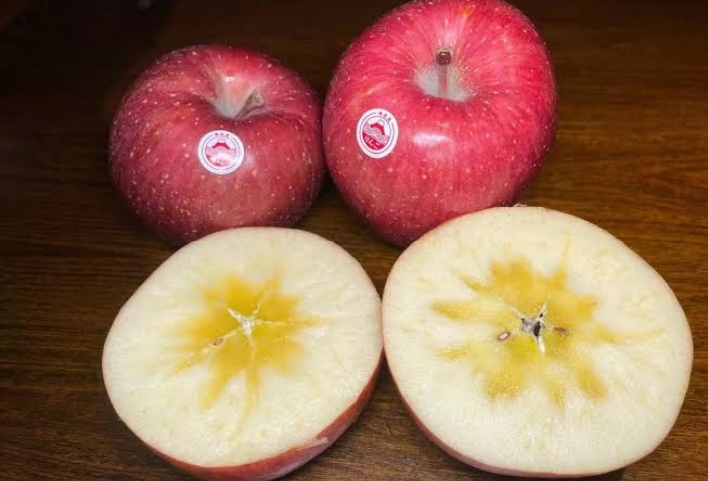
The history of the Sekai-Ichi apple dates back to the late 19th century, when Japanese farmers began experimenting with different varieties of apples. Sekai Ichi (translated literally from Japanese as ‘world number one,’ more accurately meaning ‘best in the world’) was bred at the Prefectural Experiment Station in Aomori, Japan in 1930. It is a cross between Red Delicious and Golden Delicious.
This fruit was eventually released for commercial farming in 1974 and thereon it quickly gained popularity for its unique flavor and high quality, and soon became one of the most sought-after fruits in Japan. Today, this variety is quite highly regarded in Japan where a single apple can sell for as much as $25 each.
In the modern-day, Sekai Ichi apples are primarily grown in the Northern Aomori Prefecture of Japan, and the apples are sold domestically and exported to other countries in Asia.
Outside of Asia, Sekai Ichi apples are cultivated on a few farms in the United States, but the variety is considered a novelty that is not monitored and held under such strict growing requirements as the apples produced in Japan.
The Sekai-Ichi apple has a relatively crisp texture, sweet taste and high sugar content. It is also said to have a very long shelf life and can be stored for several months without losing its quality.
The fruit is harvested in late October and November and is sold at a premium price due to its high quality and limited availability.
The Sekai-Ichi apple is grown using traditional farming methods and is carefully tended to by farmers. The apples are hand-picked and are only sold at select markets and stores.
This is one of the most highly sought after fruit by connoisseurs. Due to its exclusivity and high price, Sekai-Ichi apple is considered to be a luxury item and is often used in high-end culinary creations.
Rambutan Fruit
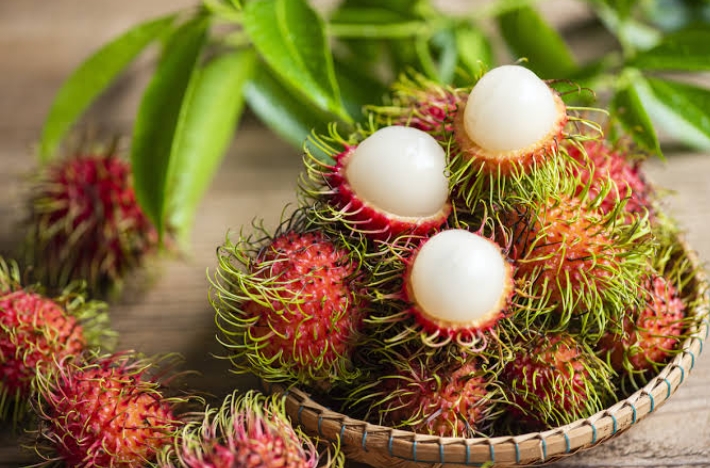
Rambutan is a tropical fruit native to Southeast Asia and commonly found in countries such as Thailand, Malaysia, and Indonesia.
The name “Rambutan” comes from the Malay word “Rambut” which means “hairy”, referring to the spiky red or yellow hairy exterior of the fruit.
The fruit itself is about the size of a golf ball and has a sweet and slightly sour taste. The fruit’s skin is thin and inedible. When the fruit is opened, the flesh inside is white and translucent. It is juicy and has a sweet and slightly sour taste.
The flesh surrounds a large, inedible seed in the center. The flesh is firm and has a jelly-like texture. The fruit is typically eaten fresh, but it can also be used to make jams, jellies, and preserves.
Rambutan is considered one of the most expensive fruits in the world, due to its limited growing regions and the fact that it is a seasonal fruit. The trees are prolific and can produce hundreds of fruits in a season.
Rambutans are easily bruised and must be harvested by hand, cut in clusters to prevent the rind’s tearing. Rambutans also have a short shelf life, limiting the fruit’s ability to be exported long distances.
Beyond the fruits, Rambutan trees are considered an ornamental variety, valued for their color contrast between the bright fruits and dark green leaves.
Historically, Rambutan has been cultivated by local communities in Southeast Asia for centuries. It was first introduced to Europe and the Americas in the late 19th and early 20th centuries by traders and explorers.
Today, Rambutan cultivation is increasing worldwide especially in many tropical areas, because its fruits are valued for fresh eating, desserts, and flavoring beverages, though the majority of commercial production still takes place in Southeast Asia.
Also Read: Different Varieties of Yellow Apples
Ruby Roman grapes
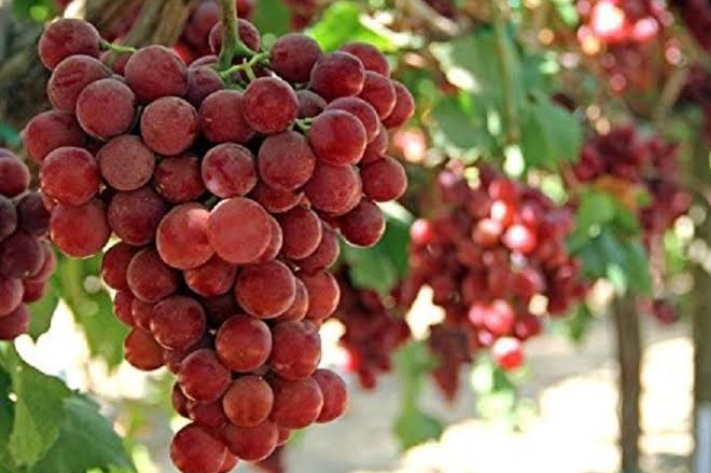
Ruby Roman grapes are considered to be one of the most expensive fruits in the world due to their rarity and high price. They were first developed in Japan in the late 1990s by a company named “S&B foods” by crossbreeding a red seedless grape with a white seedless grape.
These grapes are known for their large size, sweet taste, and high sugar content. They are typically sold in small quantities and at a high price, with a single bunch often costing several hundred dollars.
The grapes are grown under strict conditions to ensure their high quality, such as being grown in greenhouses with controlled temperature, humidity and light. They are also hand-pollinated, and hand-picked to ensure the highest quality.
The grapes are grown in limited quantities, and are typically only available for a short period of time during the year, usually around late summer to early fall. They are also considered a luxury item and are often given as gifts in Japan.
The high price of Ruby Roman grapes is also due to the fact that they are difficult to grow and require a lot of care and attention. The grapes must be grown in a controlled environment, with strict temperature and humidity levels, and are hand-pollinated and hand-picked to ensure their quality.
In addition to their high cost, Ruby Roman grapes have also gained attention for their unique taste and texture. They are said to be sweeter and juicier than traditional grapes, with a unique crunchy texture. They are considered a delicacy, and are often given as gifts in Japan.
In 2008, there was a media sensation around the Ruby Roman grapes after a 700-gram bunch sold for 10,000 yen which is $910 American. This crowned it as the most expensive grape throughout the globe. Then again, in 2016, a bunch of 26 grapes sold for 1.1 million yen or $11,000 American.
Cubed watermelons
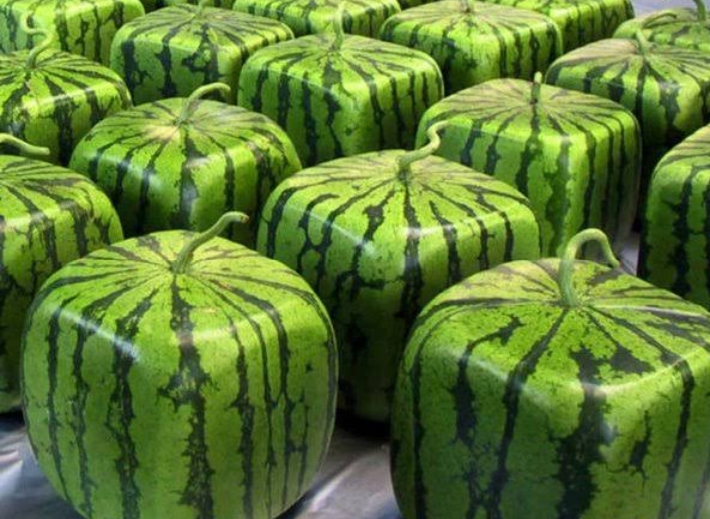
Square or cubed watermelons are a type of watermelon that have been grown into a specific shape through a process called “fruits sculpture.” This process involves placing the watermelon into a square or cubed-shaped mold while it is still growing on the vine. The watermelon will then take on the shape of the mold as it continues to grow.
Square watermelons are not only unique in shape, but they are also smaller and more compact, which makes them easier to store and transport. They are also said to have a sweeter and more concentrated flavor.
Cube watermelons were intended to fit more compactly in fridges and their shape makes them easier to cut as they don’t roll. They were invented by graphic designer Tomoyuki Ono in 1978.
This type of watermelon first became popular in Japan in the early 2000s, where they were sold at a premium price due to their unique shape and the labor-intensive process of growing them. They have since been grown in other countries, but continue to be considered a luxury item.
However, it is important to note that these watermelons are not genetically modified, but are grown in a special square or cubed shaped mold. These fruits are costly in the market, because they are considered as luxury item and a status symbol.
They tend to appeal to wealthy or fashionable consumers. In 2001, square watermelons sold for ¥10,000 in Japan (about US$83), two to three times the price of regular watermelons in Japanese stores. In the United States in 2014, some sold for $200.
Miyazaki Mango
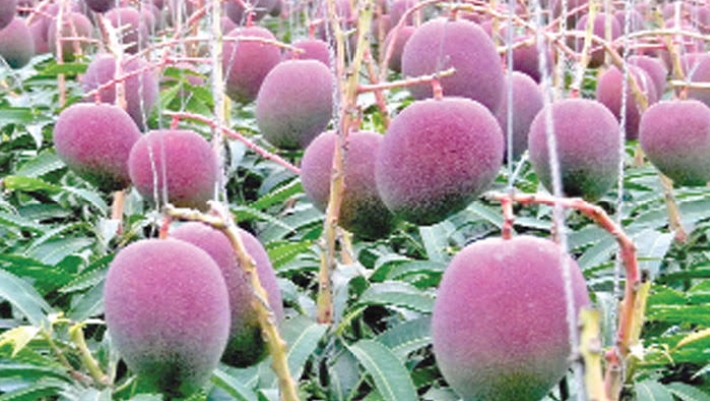
Miyazaki mangoes also known as ‘egg of the sun’, or Taiyo-no-Tomago in Japanese are a special type of mangoes that are grown in the Miyazaki prefecture in the southern tip of Kyushu Island in Japan.
According to the Official Miyazaki City travel guide website, this area of Japan is well known for its fruit production, including kumquats and lychees, thanks to its ideal climate that is, soil condition and long hours of sunlight combined with the perfect amount of rainfall.
Even though some people consider Miyazaki mangoes as a variety of Irwin mangoes that were once grown in Florida in 1949. In Japan, the history of the Miyazaki mango can be traced back to the 1980s, when a local farmer in the Miyazaki Prefecture discovered a unique mango variety that had exceptional sweetness and a rich, complex flavor. The farmer shared the new variety with other local growers, and it quickly gained popularity in the region.
In the late 1990s, the Miyazaki Prefecture began to promote the mango as a high-end luxury product and began exporting it to other countries. The first thing that strikes you about a Miyazaki mango is the large size – they weigh at least 350g. Or maybe it’s the color, which is a deep shade of rich red, bordering on purple.
When you cut into the skin, you meet the vivid yellow flesh that’s creamy, juicy, fragrant and barely fibrous at all. A bite of this mango practically melts in the mouth!
Miyazaki mangoes are known for their high sugar content, which can reach up to 20% Brix. They are hand-picked and carefully packaged to ensure the highest quality.
Due to the high cost of cultivation and the limited availability, the Miyazaki mango is considered a luxury item and can sell for up to $200 per fruit.
They are actually available for a short period of time during the summer months. It is also known for being grown using traditional and sustainable farming methods, which add to its exclusivity and premium pricing.
Every year, the best mangoes are auctioned off to the highest bidder, with the record set in 2019 at 500,000 yen for a pair — almost $4,000.
White Jewel Strawberry
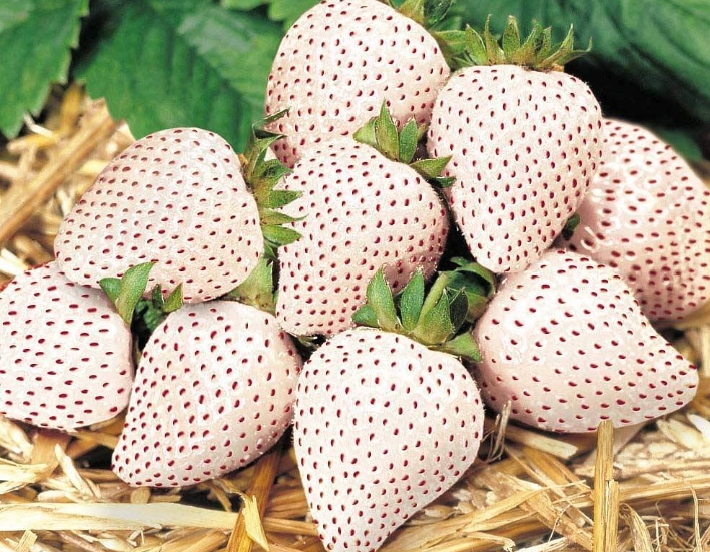
White Jewel strawberries are a type of strawberry that is known for its unique white color and sweet taste. They are considered to be one of the most expensive fruits in the world due to their rarity and labor-intensive cultivation process.
White strawberries are found in shades of white to ivory, dotted with bright red seeds, and covered in the occasional pink blush.
The White Jewel strawberry was first developed by a Japanese company in the early 2000s. It is a cross between a wild strawberry and a white alpine strawberry, which gives it its unique white color.
Today White strawberries are grown in Saga, Nara, Yamanashi, Chiba, and Tochigi prefectures in Japan and are produced through a limited number of growers to maintain the fruit’s rare reputation.
The fruits are primarily sold through supermarkets, department stores, luxury fruit markets, and online retailers, and some varieties are also exported to other countries.
White Jewel strawberries are grown using a technique called “closed cultivation,” which involves growing the strawberries in greenhouses under controlled conditions. This allows for a more consistent and higher yield of berries, but also increases the cost of production.
These strawberries are also picked by hand and are only harvested when they are fully ripe, which also adds to the cost. Furthermore, they are typically only available in Japan and a few other select countries, which also contributes to their high price.
In addition to their unique appearance and taste, White Jewel strawberries are also said to have higher levels of antioxidants and Vitamin C than traditional red strawberries.
Sembikiya Queen Strawberries

Sembikiya Queen Strawberries (aka Nyohou Strawberries) are considered to be one of the most expensive fruits in the world. They are grown in Japan and are known for their large size, intense sweetness, and delicate flavor. These strawberries are generally sold in small boxes or as individual berries, and can cost anywhere from $5 to $20 per strawberry.
The history of Sembikiya Queen Strawberries dates back to the early 20th century, when a Japanese farmer named Sembikiya started growing them. He used traditional farming methods and carefully selected the best varieties of strawberries to grow, which resulted in a high-quality fruit that was highly sought after by Japanese consumers. Sembikiya also owned a fruit shop in Tokyo where people could shop all varieties of fruits they wanted.
Established in 1834, Sembikiya is Japan’s oldest fruit shop. It currently operates 14 stores, many of them concentrated in the Tokyo area. Available in boxes of 12, each pack of strawberries sells for approximately $85. Hand selected, each fruit is strikingly similar in that they are all similar shape, crimson red and shiny as gems.
Over the years, the Sembikiya brand has become synonymous with luxury strawberries in Japan, and they are often given as gifts to business associates or loved ones. They are also considered a delicacy and are often served at high-end restaurants and special occasions.
Sembikiya Queen Strawberries are grown in controlled conditions, with the temperature and humidity being closely monitored to ensure optimal growing conditions.
They are also hand-picked and carefully inspected before being packaged and sold. This attention to detail and the high cost of production are the main reasons why they are so expensive.
Dekopon Citrus
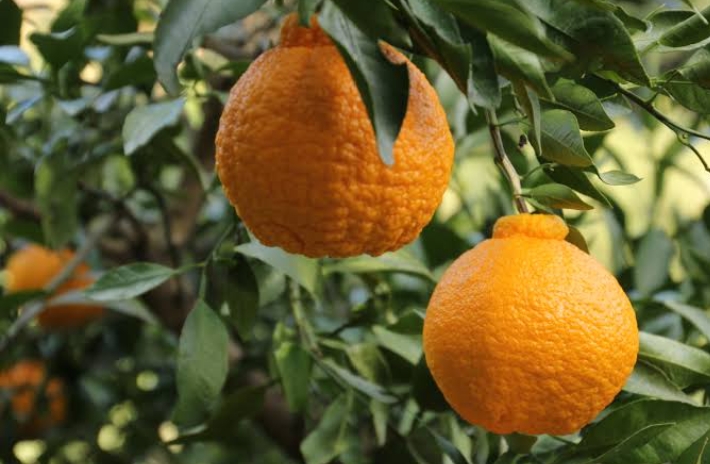
Dekopon Citrus, also known as Sumo Citrus, is a type of mandarin orange that is considered to be one of the most expensive fruits in the world. The fruit is known for its large size, sweet taste, and easy-to-peel skin.
Dekopon was first developed in Japan in 1972 by a citrus breeder named Sato Shigeru. The fruit was created by crossing two types of oranges: the Kiyomi and the ponkan. The name “Dekopon” is a combination of the Japanese words “deko,” meaning large, and “pon,” which is short for ponkan.
Dekopon oranges were first sold commercially in Japan in 1993, and quickly became popular for their unique taste and texture. They were later introduced to the United States in the early 2000s, but were not widely available until more recently.
Due to its high demand and limited supply, Dekopon oranges are quite expensive. They typically sell for around $5 to $10 each in the United States, and can sometimes be found for even more in other countries.
Other than their taste and texture, Dekopon oranges are also known for their unique appearance. They have a distinctive protruding top, which gives them a “sumo-like” appearance. This, along with the name “Sumo Citrus” have been used to market the fruit.
Due to the high cost and limited availability, Dekopon oranges are considered a luxury item and often given as gifts. They are considered a delicacy, and are enjoyed by fruit connoisseurs around the world.
Dragon fruit
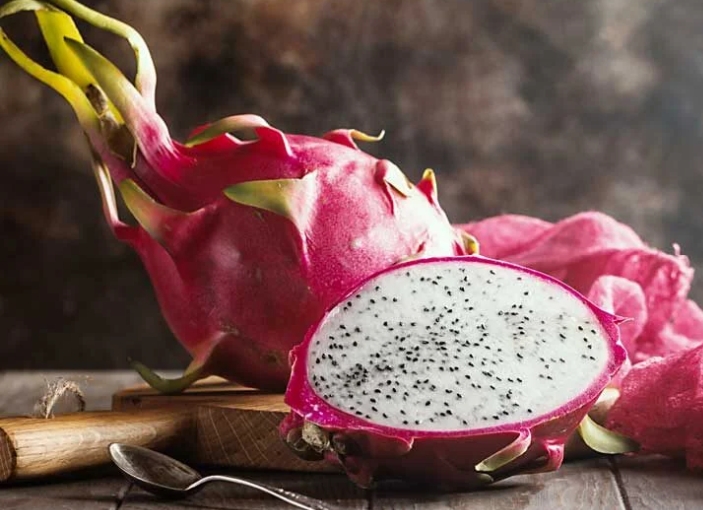
Dragon fruit also referred to as pitaya or strawberry pear, is a tropical fruit that is native to Central and South America. The fruit is known for its vibrant pink or red skin and its sweet, juicy flesh that is often described as having a texture similar to kiwi.
Dragon fruit has become increasingly popular in recent years, and as a result, it has become an expensive fruit. This is due in part to the fact that the fruit is not widely grown and is not native to many regions, which makes it difficult to cultivate and transport. Additionally, the fruit is delicate and can be difficult to harvest, which also contributes to its high cost.
The history of dragon fruit can be traced back to the ancient Aztecs and Mayans, who were known to have cultivated the fruit. However, it was not widely known or consumed outside of Central and South America until the 20th century. In the 1980s, dragon fruit began to gain popularity in Southeast Asia, where it is now widely grown and exported.
In recent years, dragon fruit has become increasingly popular in other parts of the world, particularly in the United States and Europe. As a result, its price has increased. However, many people still consider it to be a delicacy and are willing to pay a premium for it.
Dragon fruit is also known for its nutritional benefits, it is rich in vitamin C, antioxidants, and other essential vitamins and minerals. It is also a good source of fiber and is low in calories, making it a healthy addition to a balanced diet.
Buddha-shaped pears
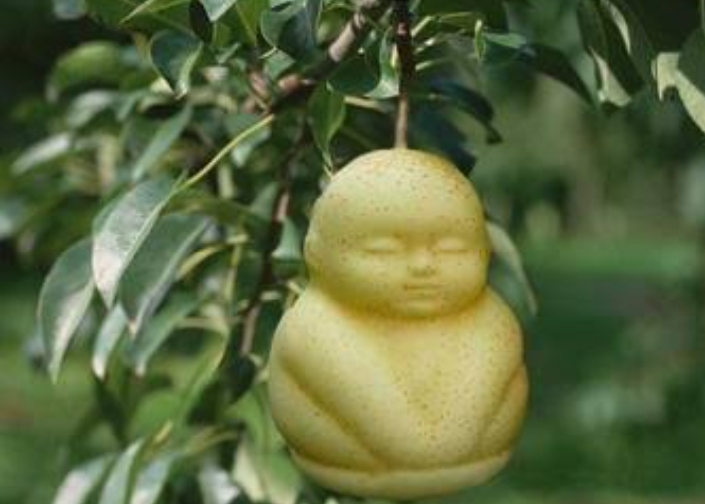
Buddha-shaped pears, also known as “pear Buddha,” are a type of pear that are grown in the shape of a Buddha’s head. These pears are considered to be a delicacy and are quite expensive due to the labor-intensive process of growing and shaping them.
The history of Buddha-shaped pears can be traced back to the Ming Dynasty in China (1368-1644). During this time, Chinese farmers discovered that they could shape fruits and vegetables by growing them in special molds. This practice, known as “peng pai,” was used to create various shaped fruits including the Buddha-shaped pear.
To grow a Buddha-shaped pear, farmers use a mold in the shape of a Buddha’s head and place a young pear tree sapling into it. As the tree grows, it takes on the shape of the mold. The process is very delicate and requires a lot of care and attention. The pears need to be hand-pollinated and hand-picked at just the right time to ensure that they are the perfect shape and size.
The flesh of a Buddha-shaped pear is juicy and sweet, with a slightly gritty texture. It is typically white or light yellow in color, and is similar in taste and texture to that of a regular pear.
The rind of a Buddha-shaped pear is green, but can also be yellow or brown depending on the ripeness of the pear. The rind is smooth and slightly glossy, and is typically eaten with the rest of the fruit. It is not as tough as other pear varieties and could be eaten with the pear.
Due to the labor-intensive nature of growing Buddha-shaped pears, they are quite expensive and are considered a luxury item. They are often given as gifts and are considered a symbol of good luck and prosperity.
The Heligan Pineapple
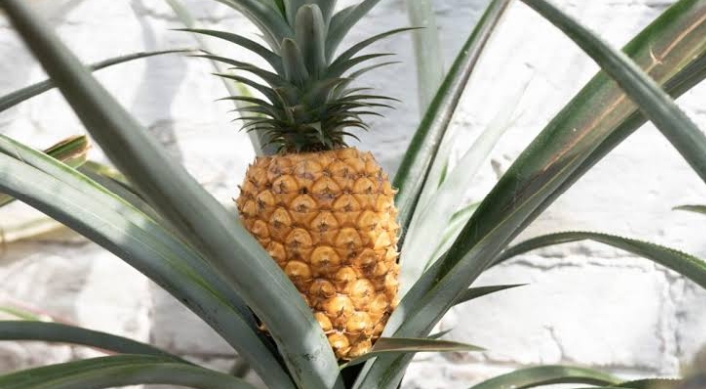
The Heligan Pineapple is a variety of pineapple that was historically grown in the gardens of the Tremayne estate in Cornwall, England, specifically at the Lost Gardens of Heligan. These pineapples were considered a status symbol in the 19th century, as they were difficult and costly to cultivate.
The method used to grow these pineapples was called “forcing” and it involved constructing a special greenhouse called a “pineapple pit” that was heated by rotting manure. The pineapples were planted in large pots filled with rich soil and placed on a bed of manure. The warmth and humidity of the greenhouse helped to ripen the fruit, which took about two years to mature.
Due to the cost and labor involved in growing pineapples in this way, they were considered a luxury item and were often served as a dessert at grand banquets and dinner parties. They were also given as gifts to important guests and dignitaries. According to a BBC report, the Heligan pineapple costs about 1,00 pounds sterling.
The flesh of the Heligan Pineapple is said to be particularly sweet and flavorful. The texture of the Heligan Pineapple is described as being firm and juicy. The fruit is harvested when it is fully ripe, which results in a flesh that is not too soft or mushy. Once the pineapple is ripe, the leaves are removed, revealing a golden-yellow rind that is slightly rough to the touch.